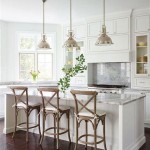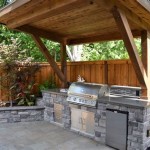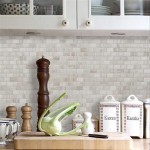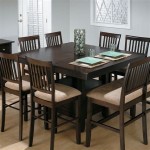What to Put In Kitchen Cupboards: A Comprehensive Guide
Efficient kitchen organization is paramount to a functional and enjoyable cooking experience. The strategic placement of various items within kitchen cupboards can significantly impact accessibility, workflow, and overall kitchen aesthetics. This article provides a comprehensive guide on what to put in kitchen cupboards, considering factors such as frequency of use, item size, and cabinet location.
Optimizing Upper Cabinets: Prioritizing Accessibility
Upper cabinets, generally positioned above countertops, offer prime storage space for frequently used items and lighter objects. Prioritizing accessibility in these cabinets is crucial for streamlining cooking and preparation tasks.
Everyday Dishes: One of the most common items stored in upper cabinets are everyday dishes. Plates, bowls, and saucers used multiple times a day should be kept within easy reach. Consider arranging these items in stacks, with the most frequently used dishes positioned at the front for convenient access. Dish racks can be used within the cupboard to maximize vertical space and prevent stacking instability.
Drinking Glasses and Mugs: Similar to everyday dishes, drinking glasses and mugs should be readily accessible. Organizing these items based on type (e.g., water glasses, juice glasses, coffee mugs) can further enhance efficiency. Utilize shelves or cupboard organizers to prevent overcrowding and potential breakage.
Spices: Storing spices in upper cabinets near the stove makes culinary tasks more efficient. A spice rack or tiered organizer can help to display spices clearly, allowing for quick identification and selection. Consider alphabetizing spices for even faster location. Avoid storing spices directly above the stove, as heat and steam can degrade their quality.
Canned Goods and Pantry Staples: Canned goods and other pantry staples like pasta, rice, and grains can be stored in upper cabinets, especially if lower cabinet space is limited. Employing can organizers or shelf dividers helps to maintain order and prevent items from getting lost in the back of the cupboard. Rotate stock regularly, placing newly purchased items behind older ones to ensure freshness.
Lightweight Cookware: Lighter pots and pans, such as saucepans and frying pans used frequently, can be stored in upper cabinets. Consider using pot racks or lid organizers to maximize space and prevent clanging when retrieving items. Avoid storing heavy cast iron skillets or Dutch ovens in upper cabinets due to safety concerns related to weight.
Baking Supplies: Ingredients like flour, sugar, baking powder, and extracts can be stored in upper cabinets dedicated to baking. Airtight containers are essential for maintaining the freshness and quality of these ingredients. Label containers clearly to facilitate quick identification.
Measuring Cups and Spoons: Storing measuring cups and spoons near baking ingredients or the cooking area simplifies portioning and recipe preparation. Consider hanging measuring spoons inside the cabinet door for easy access.
Maximizing Lower Cabinets: Storage for Heavy Items and Appliances
Lower cabinets, located beneath countertops, are best suited for storing heavier items and larger appliances. The lower position provides stability and reduces the risk of injury when handling weighty objects.
Heavy Cookware: Cast iron skillets, Dutch ovens, and stockpots are ideal candidates for lower cabinet storage. Their significant weight makes them unsuitable for upper cabinets. Dedicated pot and pan organizers or pull-out shelves can facilitate access and prevent scratching or damage to the cabinet interior.
Small Appliances: Blenders, food processors, stand mixers, and other small appliances should be stored in lower cabinets. These appliances often take up considerable space and are best kept out of sight when not in use. Consider using appliance lifts or pull-out shelves to facilitate easier lifting and maneuvering.
Mixing Bowls: Nesting mixing bowl sets are well-suited for lower cabinet storage. Their weight makes them less ideal for upper cabinets, and their nested design optimizes space utilization. Consider placing lids for mixing bowls in a separate container or lid organizer to maintain order.
Bakeware: Baking sheets, cake pans, muffin tins, and other bakeware items can be stored in lower cabinets. Vertical dividers or bakeware organizers help to prevent scratching and facilitate easy retrieval. Arrange bakeware based on frequency of use, with the most frequently used items positioned at the front.
Pots and Pans with Lids: For pots and pans stored in lower cabinets, a dedicated lid storage solution is beneficial. Lid organizers or pot racks with lid storage compartments can prevent clutter and ensure that lids are easily accessible when needed.
Plastic Containers: Plastic containers for food storage often accumulate in kitchens. Designate a specific lower cabinet or drawer for storing these containers and their lids. Implement a system for matching lids to containers to minimize frustration. Consider using a container organizer to maximize space and prevent lids from getting lost.
Cleaning Supplies: Cleaning supplies, such as dish soap, sponges, and cleaning sprays, can be stored in a lower cabinet, ideally under the sink. Ensure that cleaning supplies are stored securely and out of reach of children and pets. Consider using a caddy or organizer to keep cleaning supplies neatly arranged.
Specialized Cabinet Spaces: Corner Cabinets, Drawers, and Pantries
Kitchen design often incorporates specialized cabinet spaces such as corner cabinets, drawers, and pantries. These spaces require tailored organization strategies to maximize their utility.
Corner Cabinets: Corner cabinets, often challenging to access, can be optimized with specialized solutions. Lazy Susans or pull-out shelving units can significantly improve accessibility to items stored in the back of the cabinet. Store less frequently used items in corner cabinets to minimize the impact of limited accessibility.
Drawers: Drawers are ideal for storing utensils, cutlery, and kitchen gadgets. Drawer dividers or organizers help to keep items neatly arranged and prevent clutter. Consider designating specific drawers for different types of items, such as cutlery, cooking utensils, and food preparation tools.
Pantry: A pantry, whether a walk-in pantry or a cabinet-style pantry, provides ample storage space for food items. Organize the pantry by category, grouping similar items together. Use clear containers to store dry goods such as cereals, pasta, and rice. Label shelves clearly to facilitate quick identification of items. Rotate stock regularly, placing newly purchased items behind older ones.
Utensil Drawers: These are most efficient when organized with dividers that separate forks, spoons, knives, and serving utensils. This prevents items from becoming jumbled and makes it easier to quickly find what is needed.
Spices in Drawers: Low, wide drawers can be converted into excellent spice storage. Laying spice jars flat allows for easy viewing of labels. Use tiered inserts if needed to elevate the back rows.
Pot and Pan Drawers: Deep drawers are excellent for storing pots and pans. Use dividers to keep them organized and prevent them from scratching each other.
Dish Storage in Drawers: While less common, storing dishes in deep drawers can be surprisingly efficient and ergonomic, particularly for those with back issues. Heavy-duty drawers with proper dividers are required.
Effective kitchen cupboard organization involves a thoughtful assessment of individual needs and culinary habits. By strategically placing items based on frequency of use, weight, and cabinet location, one can create a functional and visually appealing kitchen space. Regular decluttering and reorganization are essential for maintaining an efficient kitchen and maximizing storage capacity.

How To Organize Your Kitchen Cabinets And Pantry Feed Me Phoebe

How To Organize Your Kitchen Cabinets And Pantry Feed Me Phoebe

How To Organize Your Kitchen Cabinets And Pantry Feed Me Phoebe

How To Organize Your Kitchen Cabinets Step By Project The Container Store

Best Way To Organize Kitchen Cabinets Step By Project The Container Store

How To Organize Your Kitchen Cabinets And Pantry Feed Me Phoebe

Best Way To Organize Kitchen Cabinets Step By Project The Container Store

How To Organize Your Kitchen Cabinets And Pantry Feed Me Phoebe

Styling Above Kitchen Cabinets 100 Things 2 Do

How To Organize Your Kitchen Cabinets And Pantry Feed Me Phoebe








